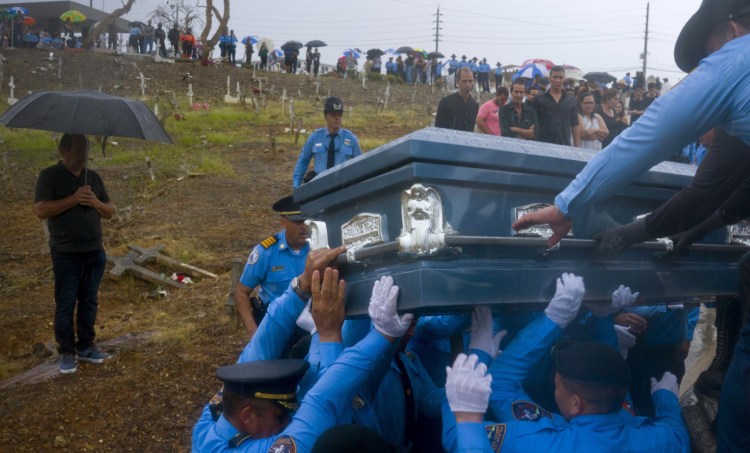America was watching last September as Puerto Rico, still reeling from Hurricane Irma, was hit by the more powerful Hurricane Maria, which destroyed 70,000 homes and left 3.3 million residents without power or water. For those few days, the island was able to hold the public’s attention in a way it couldn’t before and hasn’t since.
And that’s the reason why Puerto Ricans – Americans all – are still struggling to pick up the pieces, just as another hurricane season is bearing down.
There was hope last week that a new report on deaths during the hurricane would bring attention to the neglect and mismanagement that allowed the storm to cause so much tragedy. Instead, the discussion devolved into an argument over its accuracy.
Headlines announcing the Harvard University report said it estimated that 4,645 Puerto Ricans died because of Maria, more than 70 times the federal government’s official count, but that’s not exactly right. The study, in which researchers interviewed families on the island to make up for the lack of official information on mortality, actually found with 95 percent certainty that the number of dead was between about 800 and 8,500 – 4,645 was just the midpoint, and no more likely than any other number in that range.
Other examinations have settled on slightly different numbers – between 605 and 1,039 in one, 1,085 in another, 1,052 in yet another – and it’s certainly far more than the official count of 64.
But it’s not so much how many people died, but why. Most of the indirect deaths resulting from the storm – those that came in the days and week after the hurricane – were from delayed or interrupted medical care, largely because of the lack of electricity, or from unhealthy and unsafe conditions that come when such devastation occurs.
In short, people died because the island was not equipped to absorb such a powerful storm, and because governments there and in Washington were not up to the huge task of rebuilding quickly.
Hurricane Maria took out an aging electric grid that had been allowed to deteriorate through years of mismanagement by the Puerto Rican power utility. It hit an island suffering from federal neglect, where poverty and financial instability are considered acceptable in ways that would never be applied to one of the 50 states.
Once the storm was over, there was a slow and insufficient response that went wrong from the beginning. There were poor decisions by both local and federal officials that ensured the recovery would take longer than necessary.
In addition, there seemed to be no sense of urgency in the federal response, with chronic late deliveries of aid and construction supplies, and reports of workers sitting around waiting for orders.
The average resident went 84 days without power and 68 days without running water. So while President Trump was in Puerto Rico in the days after Maria, throwing paper towels and saying that he was “very proud” that only 16 people died, the misery was just starting for most Puerto Ricans.
Even now, as officials boast that power is back, it is only a mirage. The reconstructed grid is almost as flimsy as the one destroyed last year – there have been multiple blackouts caused by minor accidents to just one small section. How is it going to withstand another storm?
We would never accept that sort of response after such devastation in, say, Florida or Texas. But it is indicative of how Puerto Rico has been treated for years, and we should be ashamed that nothing has changed in the wake of the destruction wrought by Maria, but years in the making.
Send questions/comments to the editors.


